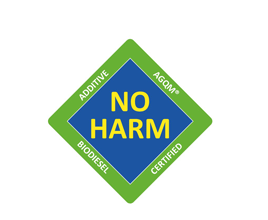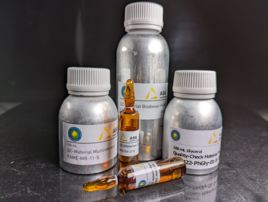
-
Why are additives used in heating oil?
-
Test criteria no-harm test oxidation stabilizers
-
How can I have my additive tested?
-
No-harm list for oxidation stabilizers
Why are additives used in heating oil?
Due to the increasing demand for greenhouse gas-reduced solutions in the heating market, the safe handling, sufficient quality and storage stability of bio heating oil is becoming increasingly important. In addition to the minimum requirements, DIN 51603-6 also specifies test methods and limit values for heating oils containing FAME. These are essential for the safe use of fuels in combustion equipment. When using oxidation stabilizers for biodiesel, which is used as a blending component, information on the compatibility or possible unwanted interactions of the oxidation stabilizers used with the heating oil matrix or the additives of the fossil heating oil is also of great importance.
In cooperation with the mineral oil and additive industries, test criteria have been defined which can be used to test oxidation stabilizers for undesirable interactions for the FAME component in fuels.
Test criteria oxidation stabilizers
The no-harm test for oxidation stabilizers comprises the following test criteria:
- Compliance with predefined minimum requirements (B100)
- Filtration test according to DGMK 663 (B20)
- Relative efficiency of oxidation stabilizers to BHT (B100)
The most important minimum requirement is to achieve an oxidation stability of at least 9 h in pure FAME (RME:SME - 70:30) at the dosing rate of the additive recommended by the manufacturer. Furthermore, the safety-related properties of the biodiesel (e.g. flash point, water hazard class, etc.) must not change and the limit values of EN 14214 for biodiesel must also be complied with after additivation. As a special challenge, interaction tests are carried out with three oxidation stabilizers that have already been successfully tested. Subsequently, filtration test are carried out in a B20 (diesel fuel with 20% (V/V) biodiesel blend).
In addition to the test parameters relevant to the application (minimum requirement, filtration and interaction test), the relative efficiency compared to BHT is also of great interest. In a defined procedure, four different scenarios are used to determine which dosing rates of the tested stabilizers correspond in their effectiveness to the reference dosing of BHT. The efficiency test is not essential for passing the no-harm test.
Products that pass all test criteria are included in the no-harm list for oxidation stabilizers, which is available free of charge on request. Additive manufacturers receive a certificate containing all no-harm test results. If interested, the certificate can be requested from the relevant manufacturers.
Interactions with the company-specific additive packages are not analyzed in this context.
How can I have my additive tested?
Would you also like to have one of your products certified? Then register here.
No-harm list for oxidation stabilizers
We will be pleased to provide you with a personalized copy of the no-harm list free of charge.
Please complete the form below and we will send you the list as a pdf file by e-mail for your personal use.





